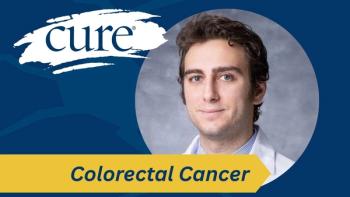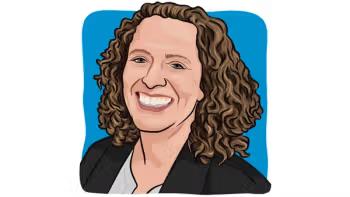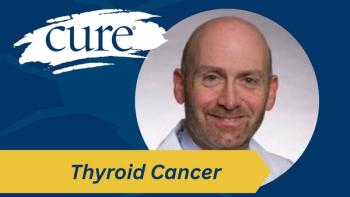
Tell, Ask, Listen, Know: Close the Communication Gap Between Minority Cancer Survivors and Their Providers

Three experts discuss an intervention strategy to improve the lack of communication between minority women and their cancer care teams.
While genetic counseling and testing is important for informing treatment decisions and risk management in patients with cancer, the playing field is not quite even for all women, according to an expert.
“There (are) stark disparities across all the genetic counseling and testing continuum in that minorities have lower awareness about hereditary cancer, lower use of genetic counseling and testing, lower screening, lower referrals; they're less likely to get testing and they are less likely also to follow the risk management strategies,” said Alejandra Hurtado de Mendoza, an assistant professor at the Cancer Prevention and Control program at Georgetown Lombardi Comprehensive Cancer Center.
Some of these disparities are related to the health care system, while others are related to psychosocial factors, according to Hurtado de Mendoza, who presented this information at the 12th Annual Joining Forces Against Hereditary Cancer Conference.
A Lack of Discussion About Genetic Testing for Minority Women
Hurtado de Mendoza highlighted research that demonstrates these disparities – for example, a 2015 study published in the Journal of Clinical Oncology found that of 1,536 women diagnosed with nonmetastatic breast cancer, minority women – 40.4% of Spanish-speaking Latina women, 18.3% of English-speaking Latina women and 13.3% of Black women – were more likely to have an unmet need for discussion about genetic testing with a health care professional.
“And when they talk about unmet needs of discussion, that is for women who reported a strong desire to attend genetic testing or to hear about genetic testing, but a failure from providers to discuss about genetic testing,” Hurtado de Mendoza explained.
Similarly, in a 2017 study published in Cancer, researchers found that among 1,622 breast cancer survivors (diagnosed at age 50 or younger), Black women were 16 times less likely to have a discussion about genetic testing with a health care provider when compared with non-Hispanic White women. Additionally, Spanish-speaking Latina women were two times less likely to have that discussion with their providers.
“Based on their diagnosis, they should all have been referred to genetic counseling and testing,” Hurtado de Mendoza said. “…And discussion about genetic testing is a key factor for utilization of counseling and testing.”
Behind the Gap: What Are the Communication Barriers?
Hurtado de Mendoza emphasized a study from 2017 that points to some specific contributors to the lack of discussion about genetic testing with minority women. The researchers, who published their findings in Journal of Genetic Counseling, observed 170 genetic counseling visits including patients who spoke English, Spanish and Chinese languages. After observing the visits, they interviewed patients about whether they understood the information and/or if any of their questions were left unanswered.
The researchers found that the genetic counselors shared too much information, used terminology that was too complex and unintentionally inhibited patient engagement and question-asking. They also found that there was a disconnect between what the patients really want or need to know versus what information the counselors provided.
“When patients have more information, have better communication with providers and better understanding, they have better health outcomes,” Hurtado de Mendoza said.
The “Talk Back!” Model
How can these disparities be addressed? According to Vanessa B. Sheppard, professor and the Theresa A. Thomas Memorial Chair in Cancer Prevention and Control at the Virginia Commonwealth University School of Medicine, the “Talk Back!” model is a method that was co-created with cancer survivors that may help empower patients.
“The idea was really wanting to figure out, how can we enhance the encounters that women have?” Sheppard explained during the presentation. “If you think about the key way the information is translated, once you’re diagnosed, is in that encounter quite often with your medical oncologist. Other team members and medical team members are often apart, family members are sometimes apart. But we really examine, what could we do to help really empower and form women to make relevant decisions?”
The model originated from a focus group with a trained survivor interventionist, Sheppard said. They also conducted qualitative interviews to identify optimal communication ideas and culturally relevant materials.
The “Talk Back!” model consists of four parts: tell, ask, listen and know.
The first part – the tell aspect – encourages women to tell their story. Sheppard explained that with a focus on African American women, their goal is for women to be able to tell their story, who they are, preferences and values. This way, their health care provider is aware of this information and can consider how it would impact a patient’s ability to follow recommended guidelines, who else would be important to consider and what their experiences of treatment are.
For the next step, the model encourages women to ask questions – and have the right skills and tools for asking them.
“They were actually trained in different techniques, in terms of both telling the story, perhaps maybe how to interrupt the physician that's talking to ask questions, and then they went through with their survivor coach, going through the process of identifying questions that were relevant for them,” Sheppard said.
The third step emphasizes the importance of listening actively, which can mean taking notes and engaging. The goal is for patients to develop and practice listening skills, because often a health care appointment can be a stressful environment for them, and some walk away and realize they did not comprehend what was said.
The last piece is “knowing your options,” Sheppard said. This includes familiarizing women with their treatment options and walking them through a process of costs and benefits for each option.
“Now when I talk about the benefits and the costs, this isn't just from a numeric standpoint and just from the clinical perspective,” she said. “This is, ‘I'm going to maybe make this decision. And as a result, I may have to tell my family.’ … we think that this is something that can be relevant in multiple contextual environments.”
What Does the “Talk Back!” Model Look Like in Action?
Wanda Lucas, a breast cancer survivor and advocate who is vice president of the board of directors for the National Breast Cancer Coalition, explained the perspective of the “Talk Back!” model being applied in real life.
“As women in the audience, I know you recognize and acknowledge that we try to take care of the whole world. And I think the ‘Talk Back!’ model allows us to take care of ourselves,” Lucas said.
For the first part of the model, Lucas shared an example of a woman who told her story because she wanted to have as normal of a life as possible while going through cancer treatment. The woman shared that she participated in a church choir, and that it was very important to her not to miss rehearsals.
“I had to remind her that’s something that she should share with the health care team,” Lucas said. She encouraged her to say, “So if I'm going to have to take chemotherapy, I want to be well enough to make choir rehearsal on Tuesday, so maybe my chemo treatment to take place on Wednesday. And then by Sunday, I will feel well enough to sing in the choir. And that will bring me joy.”
In terms of asking questions, Lucas said, patients should have the right frameworks to ask important ones. This could mean preparing questions about your diagnosis and treatment, as well as the impacts. Patients should figure out when they need to make a decision, what’s involved in that decision, etc.
“And my one thing I always stress is that they should be written down,” Lucas said. “And I remember being in that situation myself, I had pages and pages of questions, because I had a page for different each provider. But what I learned is they appreciated that.”
To listen actively, Lucas emphasized that no one expects patients to remember every single thing that is said to them. Medical jargon can be confusing, especially when your emotions are reeling. This is another reason that notetaking is beneficial, as well as asking your health care provider whether you can record the visit to relisten later.
“The other thing that I suggest, because I worked with a lot of African American women, (and) we bring a whole village with us,” she said. “So bring somebody with you to the appointment because they tend to hear the things we don't hear.”
For the final step, in which patients know their options, Lucas urged that patients should understand looking at different options for your health care should be treated like looking at different houses or careers – things that people typically consider many different perspectives of.
“You want to know your options, because this is your life, your decision, and there's nothing better than a well-informed decision,” she said. “Like you wouldn't choose what to put on for a date if you didn't know where you're going, or what you were going to do that day.”
Sheppard added that the main findings from this research have shown that among 76 African American breast cancer survivors, 70% of participants experienced increased self-efficacy in communicating with providers and in making treatment decisions after the intervention. The research is ongoing, as they are currently analyzing a larger randomized trial of 400 African American women over the next five years with more exploration into intervention strategies.
For more news on cancer updates, research and education, don’t forget to




